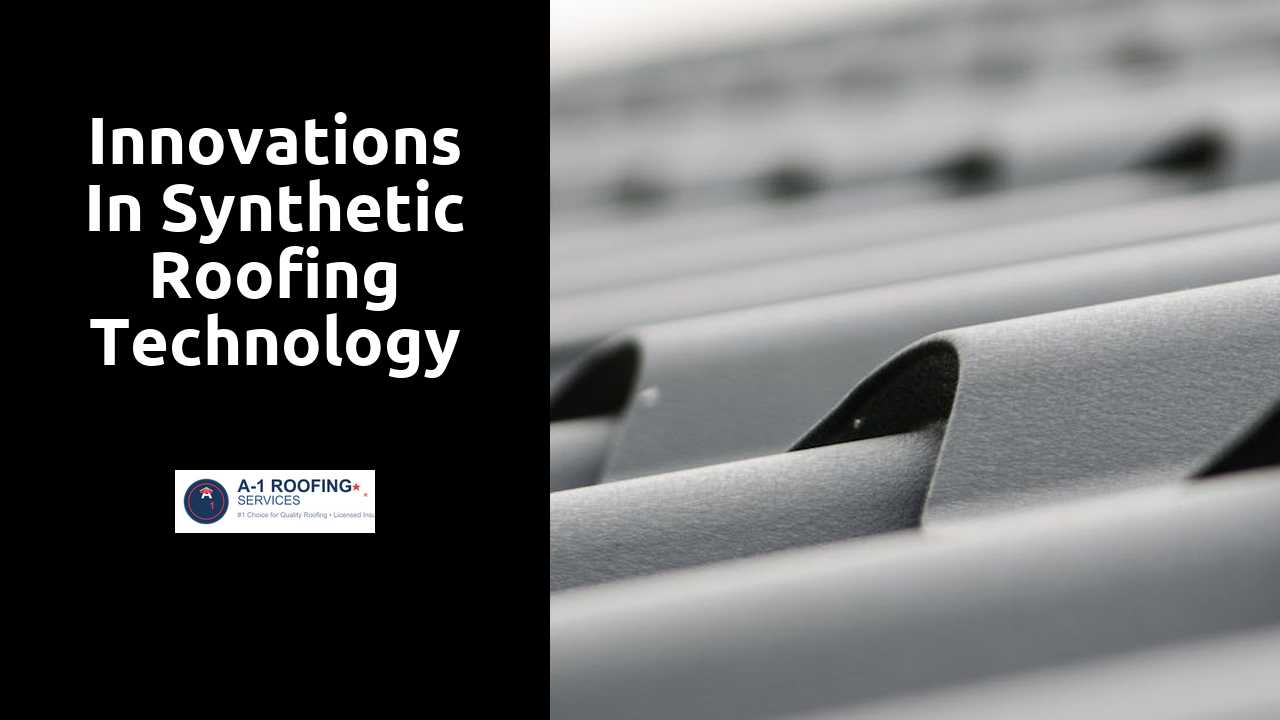
Innovations in Synthetic Roofing Technology
Table Of Contents
Innovative Installation Techniques
The evolution of synthetic roofing technology has led to the development of innovative installation techniques that streamline the entire roofing process. One notable approach is the use of pre-fabricated panels, which are designed to fit together seamlessly. These panels are manufactured off-site, allowing for faster assembly on residential and commercial properties. Not only does this reduce labor time, but it also minimizes potential errors during installation.
Additionally, advancements in adhesive technologies have begun to change traditional roofing practices. Modern adhesives provide strong bonds while allowing for quicker application compared to conventional methods. This enhances the overall durability and weather resistance of the roofing system. Contractors are also adopting tools and machinery that facilitate safer handling of materials, which further boosts efficiency on the job site. As a result, these innovative techniques contribute to better quality installations and satisfied customers.
Have a peek at this blog for further readings.
Modular Roofing Systems
The emergence of modular roofing systems has transformed traditional construction methods. These systems utilize pre-fabricated panels designed for quick assembly and installation. This approach not only streamlines the building process but also reduces labor costs significantly. Modular panels often feature designs that enhance both durability and aesthetics, making them an appealing choice for various architectural styles.
Homeowners and builders benefit from the flexibility these systems provide. Modular roofing options can be customized to fit different structures and climates, ensuring optimal performance. The ability to replace or upgrade single panels without disturbing the entire roof promotes ease of maintenance. Additionally, these systems often incorporate advanced materials, contributing to improved energy efficiency and sustainability.
Smart Roofing Systems
Advancements in roofing technology have paved the way for smart roofing systems. These systems incorporate innovative materials designed to optimize performance and enhance energy efficiency. Many options now feature integrated insulation that helps regulate a building's temperature. This not only promotes sustainability but also leads to significant savings on heating and cooling costs.
The integration of advanced features allows these systems to respond dynamically to environmental conditions. For instance, some roofs can adapt their properties in response to temperature changes or extreme weather, extending their lifespan and improving durability. Additionally, smart roofing systems often come with automated maintenance alerts, facilitating proactive care and reducing potential repair costs.
Integration of IoT Sensors
The incorporation of Internet of Things (IoT) sensors into synthetic roofing systems is transforming the way these materials are monitored and maintained. These sensors provide real-time data on various environmental conditions, such as temperature and humidity. They can also detect potential issues like leaks or structural stress early, allowing for timely interventions. This proactive approach to maintenance helps to prolong the lifespan of roofing systems and ensure they perform optimally over time.
Homeowners and building managers can benefit significantly from this technology. Access to continuous performance data allows for informed decision-making regarding repairs and replacements. The automation of alerts and reminders for maintenance tasks not only enhances convenience but also reduces unexpected costs associated with significant roof damage. Overall, the integration of IoT sensors represents a significant advancement in roofing technology, fostering smarter building management practices.
Cost-Effective Synthetic Alternatives
The demand for roofing materials that are both durable and affordable has led to the rise of synthetic alternatives. These materials, often made from recycled plastics and composites, provide a robust solution that can withstand harsh weather conditions. They are designed to mimic traditional options, such as slate or wood, while offering a fraction of the cost. This innovative approach not only contributes to environmental sustainability but also caters to budget-conscious homeowners seeking quality without compromise.
Homeowners can expect significant long-term savings when opting for synthetic roofing solutions. Reduced maintenance costs often come with these materials due to their resistance to common roofing problems like rot, mold, and insect damage. Additionally, the lightweight nature of synthetic products can lead to lower installation costs, as less structural reinforcement is required for the roof. By choosing synthetic alternatives, homeowners gain an economical roofing option that delivers both aesthetic appeal and functionality, ensuring their investment endures over time.
Long-Term Savings and ROI
Investing in synthetic roofing materials often proves to be more cost-effective over time compared to traditional options. These materials typically require less maintenance due to their durability and resistance to adverse weather conditions. Home and business owners can experience reduced energy costs as synthetic roofs can offer better insulation. This efficiency leads to lower heating and cooling expenses, ultimately improving their financial outlook.
Additionally, synthetic roofing options usually come with extended warranties, which provide further reassurance of their long-term value. As these materials help improve property aesthetics, a well-maintained roof can significantly enhance property value. The combination of decreased maintenance costs and increased property value supports a strong return on investment for those who choose synthetic roofing solutions.
Related Links
Maintenance Requirements for Synthetic RoofsTop Brands in the Synthetic Roofing Market